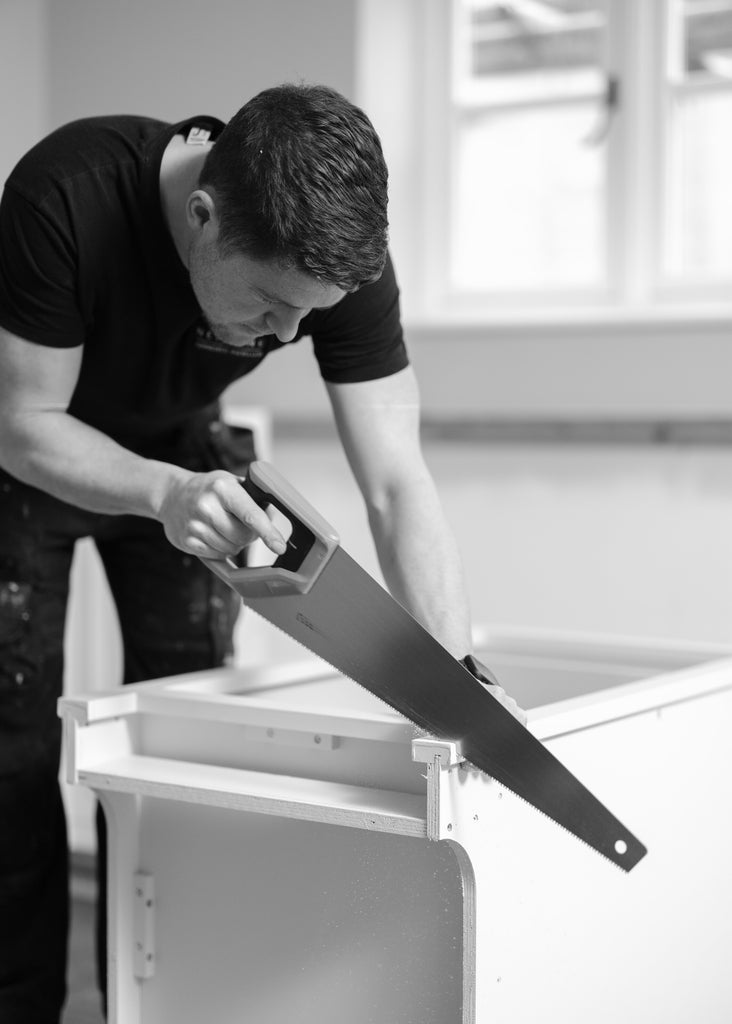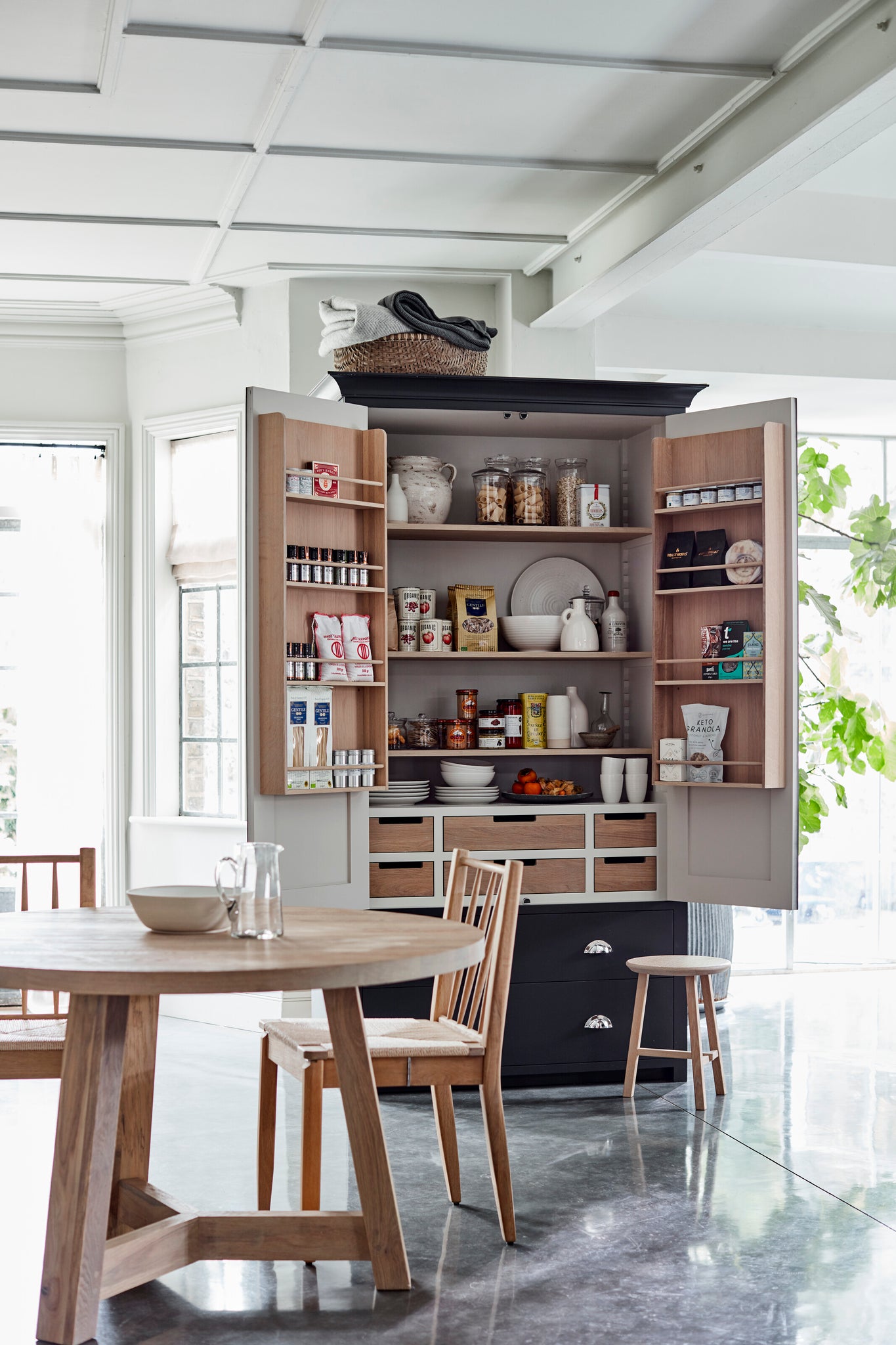1. Ask yourself, what is the motivation behind a kitchen redesign?听听
Understanding the reason for a kitchen redesign will help you to focus on the outcomes you hope to achieve with your new space. Maybe there are areas of your current kitchen that you feel need improvement 鈥� what are they? Are there features missing that are non-negotiable for your new kitchen, such as a double fridge, additional storage or a more accessible layout?听听听
2. Create a mood and sample board听听
If you鈥檝e been thinking about a new kitchen for a while, the chances are you already have a few ideas of how you want the space to look. Whether it鈥檚 a digital Pinterest board or a box filled with samples and magazine tears, pulling everything together into one moodboard is a great place to start. Be strict with what you keep on your board, whether it鈥檚 a colour theme, a style or certain appliances, editing down your board to something you can easily refer back to and use to help guide the fabrics, tiles, floor and paint samples you want to collect. It鈥檒l also be invaluable when working with a designer, giving them a clear vision to work from.听


3. Get to know your room听
Take time to really observe your kitchen 鈥� the amount of natural light, the view out the window from every angle, and any existing architectural features. They鈥檙e all things that鈥檒l decide the colours you use, lighting you may need, and where to position your furniture. Start doing this now, before you move out of your kitchen or make any changes. Living in it as it is, is the best way to understand what works and what doesn鈥檛.听
There are three main areas to consider:听
Features听
Begin by making note of any features in your kitchen that you can鈥檛 or don鈥檛 want to change 鈥� usually these will be architectural details like door frames, skirting and coving, but they could also be structural features such as walls, or purely practical ones, like the position of plug sockets. 天博体育官网 are high-traffic areas so understanding the space 鈥� from doorways to appliances to seating 鈥� will dictate the flow and layout.听
Views听
Look at (or ask your architect to help visualise) the view through your windows from every angle 鈥� including at sitting height for islands and dining tables. You don鈥檛 want to plan a dining area only to find there鈥檚 a distracting view which you hadn鈥檛 noticed before. Do the same thing from your doorways, too. You鈥檒l want to make sure that you鈥檙e not greeted by cables down the side of a fridge or an island with bar stools obstructing the entrance.听听
Light
When it comes to picking paint colours or planning artificial lighting, the most important thing to do is watch how the light changes over the course of the day. Start with working out the direction of your kitchen 鈥� most phones have a compass app on them which can help. There are some general assumptions you can make, knowing that east-facing rooms will be brightest early in the morning, and that the light in a west-facing space will be much warmer in the latter part of the day. However, not many rooms face straight in one direction, and the number and size of your windows, as well as any light coming in from other rooms, will all make a difference.听听

Our best tip?
Keep coming back into your kitchen at different times of the day (especially when you鈥檇 normally use the space) and in different weather. Make a note of how dark or light it feels. This will help guide you on whether you need additional spotlights or task lights for food prep areas, or pendants on a dimmer for over the island to create more ambience.听听
4.听Think about how you live听
How and when do you use the kitchen?听
It might seem obvious, but really consider how and when you use your kitchen. Is it mainly for prepping meals at the start and end of the day? Or does it become the heart of the home at weekends 鈥� somewhere for entertaining and enjoying long dinners together?听 Knowing that you want it to feel intimate and cosy for entertaining, for example, means you could paint it in a darker, richer colour and focus on lamp or candlelight. Or if you need it to be fully functional you would consider more task lighting and spacious work surfaces.听听
Who is using the kitchen?听
It鈥檚 important to think about who uses the kitchen and what they need from the layout. For example, how much access and space do you need between islands and cabinetry? Do you need a ladder installed to reach higher cabinetry? Is the cooker hood high enough to avoid collisions with taller family members? Some cooks require plenty of uninterrupted worksurface space, while others prioritise a double larder to store away kitchen gadgets. The more you tailor the design to suit your lifestyle, the better the kitchen will work for everyone.


5. What appliances听are non-negotiables?听
Understanding what you need in the kitchen to best suit your lifestyle is an important step. What type of cooking arrangement do you need? Do you need an extra-large fridge, a slimline dishwasher or a hob with 5-6 cooking zones? Is the space going to be used for future entertaining of family parties, Easter and Christmas? If so, it鈥檚 a good idea to consider at this time what appliances you need and plot them first to ensure the correct spacing is given around each one, and then cabinetry comes secondary to be positioned around this layout.听听
6. Set your听costing range听
Kitchen costs should be clearly defined at the start of your project. Having researched how much the work (if you鈥檙e doing any) will cost and what appliances you require, now鈥檚 a good time to set what the bottom and top of your budget is. It鈥檒l help you to stay within a range you鈥檙e comfortable with and it鈥檚 something you need in place before you book any tradespeople.听听


听7. Build your team听
If you鈥檙e having any work done to your kitchen before cabinetry and appliances are fitted 鈥� electric work, laying flooring or even just painting 鈥� and you鈥檙e not DIY-inclined (or confident you can do the job safely), you鈥檒l need to find tradespeople to work with. The earlier you do this the better, as many tradespeople get booked up months in advance. Word-of-mouth is often the way to find the best tradespeople, those recommended by a friend or even ask in store as many will happily share their local contacts. If you鈥檙e planning a larger project or need support in the design process, our kitchen designers will be able to help you with aspects like the layout and flow of your space, as well as colours, appliances and accessories. And they鈥檒l also be able to make suggestions you might not have thought about before, but that could have a big impact on your space. Our Kitchen Design Service provides a trusted service from initial consultation through to installation and our lifetime guarantee. 听

8. When to install a new kitchen?
One final consideration when embarking on a kitchen project is the time of year you are looking to complete the project. Kitchen re-designs can cause disruption to life and the lack of kitchen facilities can be inconvenient. The spring and summer are popular times of year to complete a project as you can be less reliant on your kitchen appliances, there is more potential for cold foods like salads and having BBQs, whereas the autumn and winter means considering how to accommodate warm food preparations in a temporary kitchen space. It鈥檚 also worth considering that tradespeople and suppliers may be busier or unavailable with the lead up to Christmas and the New Year, which could mean gaps in project completion. If you have a young family, school holidays or exam time are also big considerations that can sometimes be overlooked.听

听
If you need any advice on fitting a new kitchen, book a free initial听design consultation with our expert kitchen designers to learn more.听
]]>




























